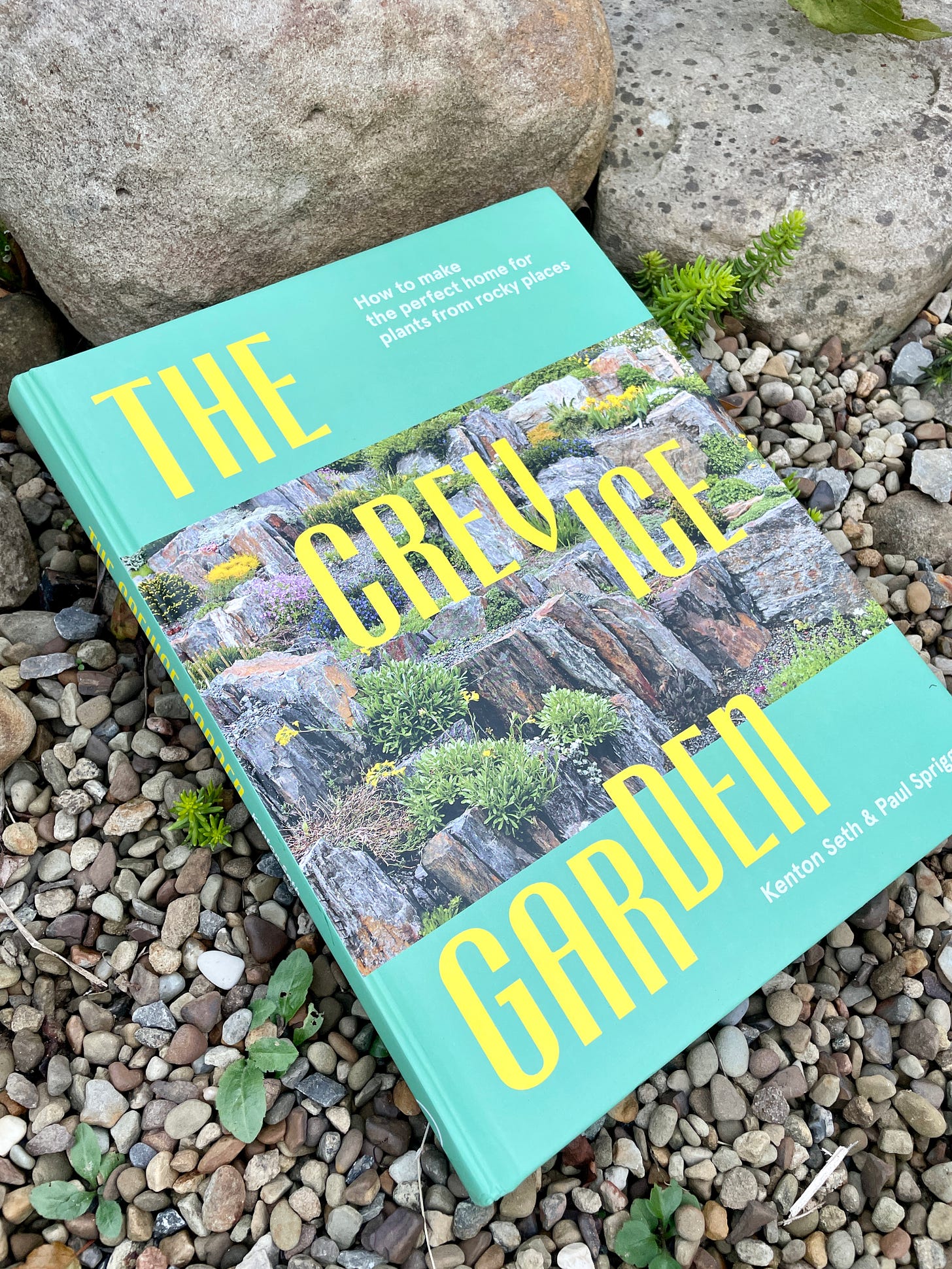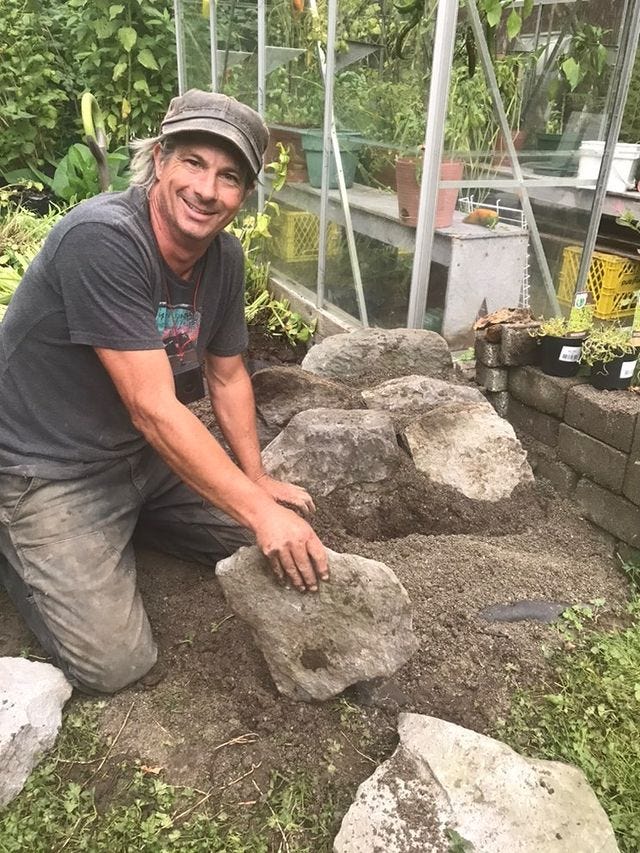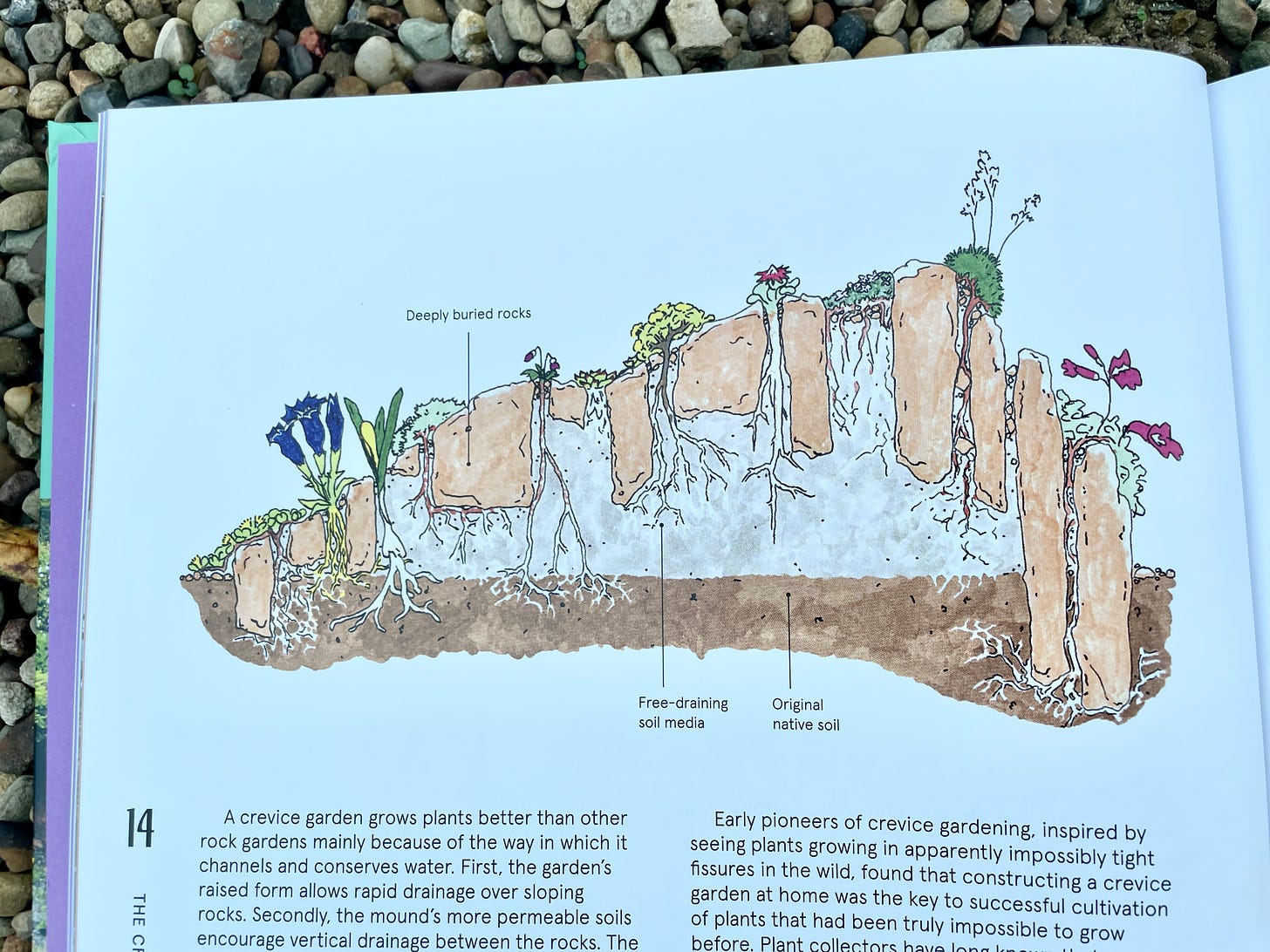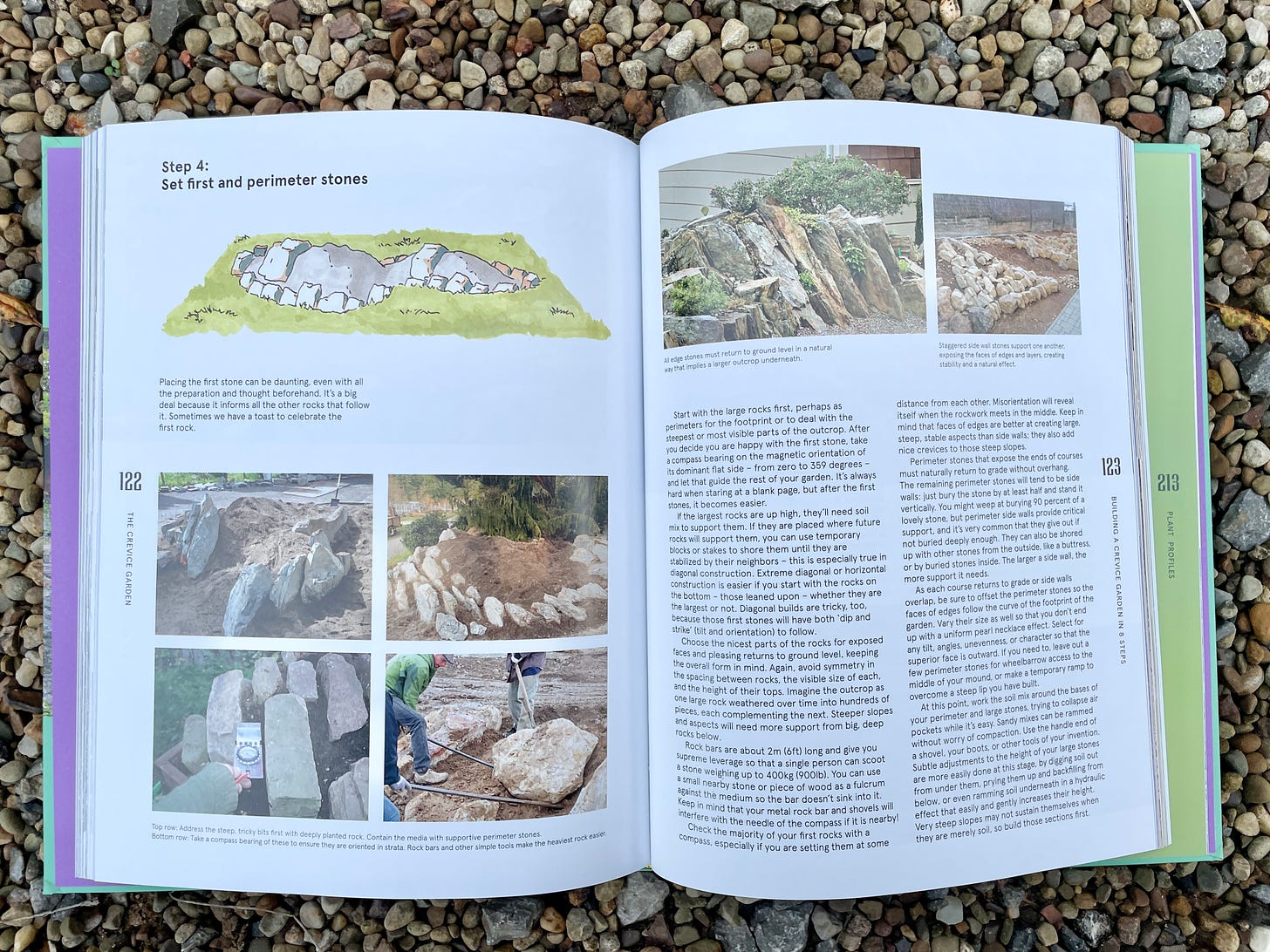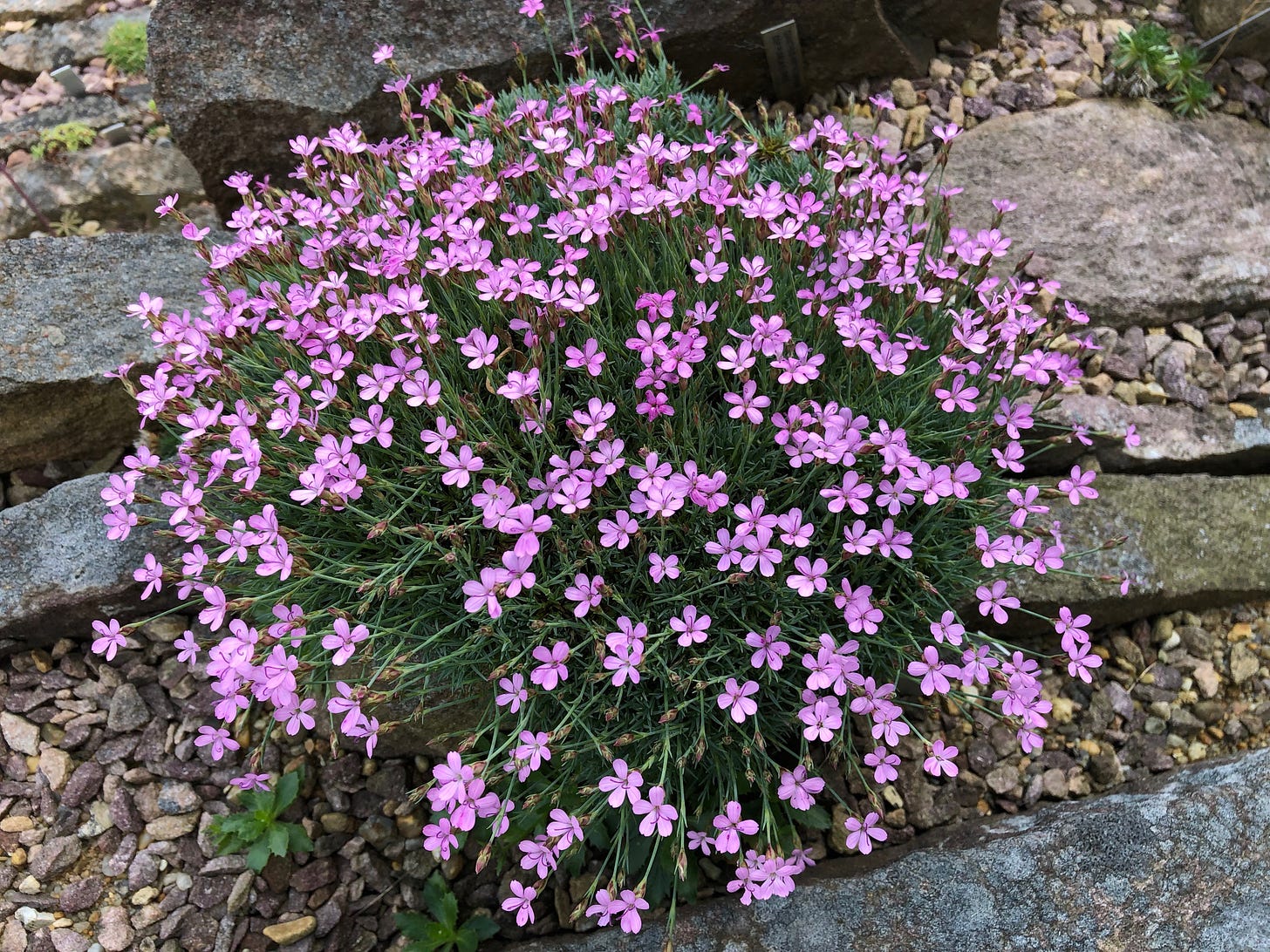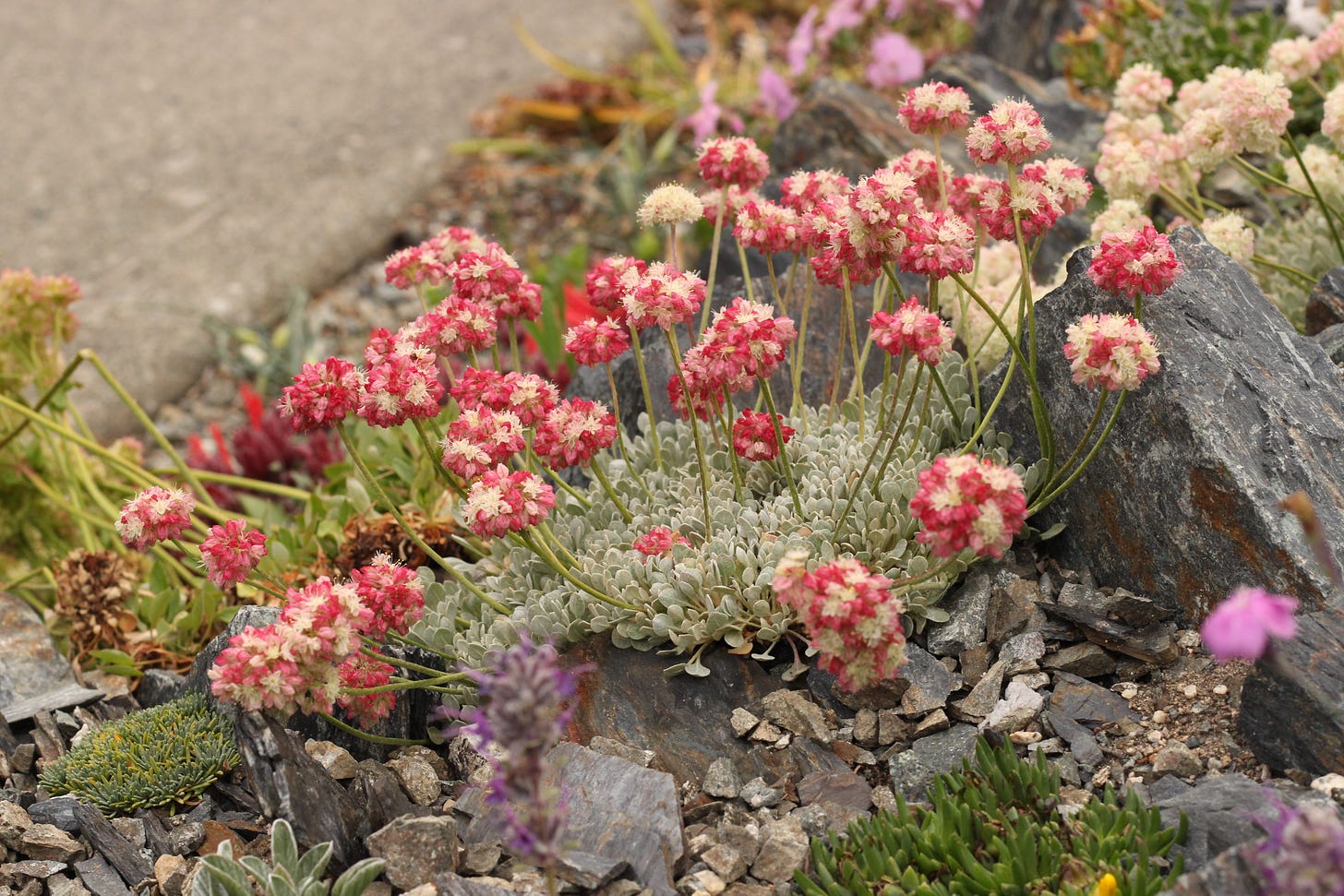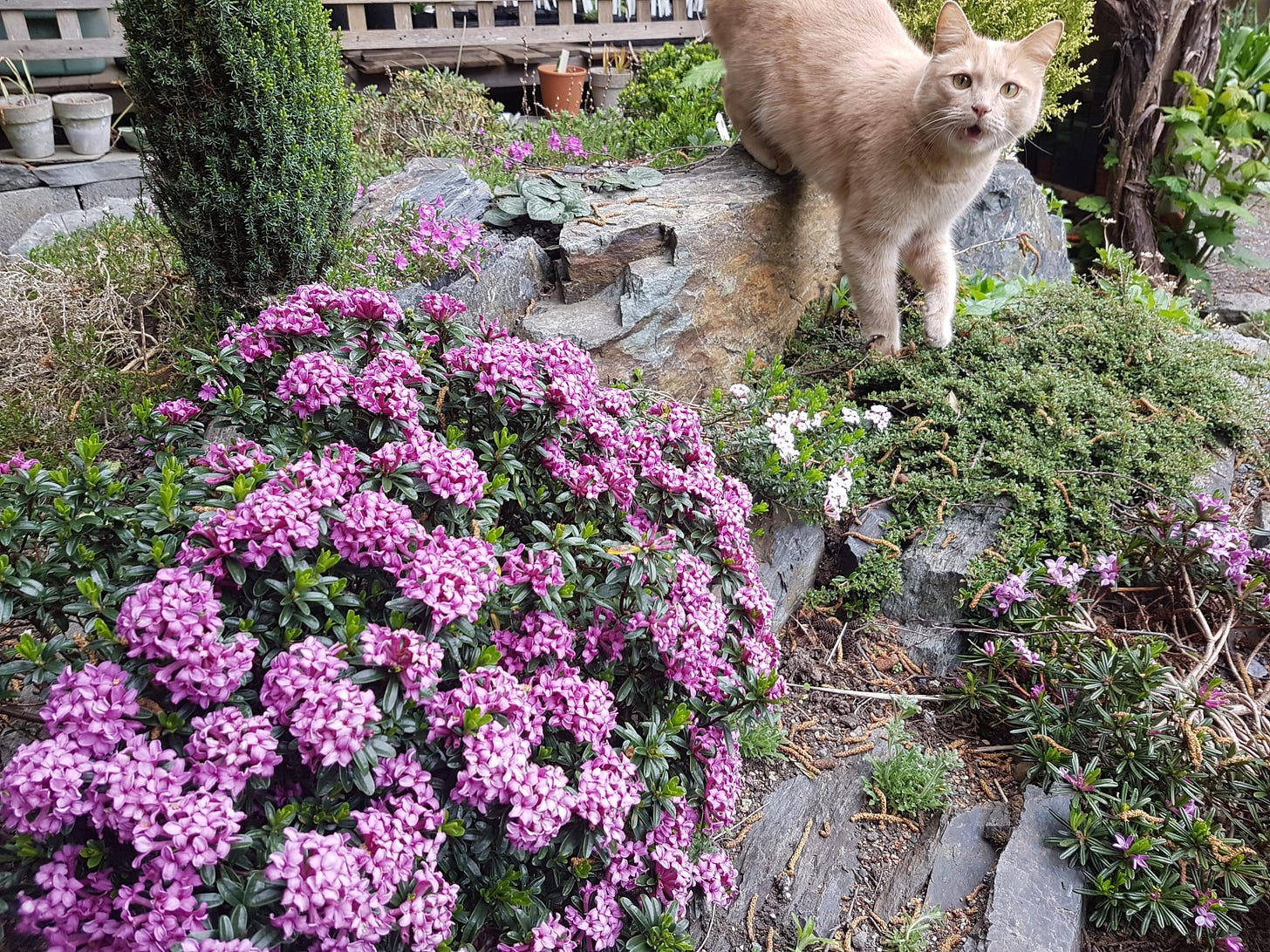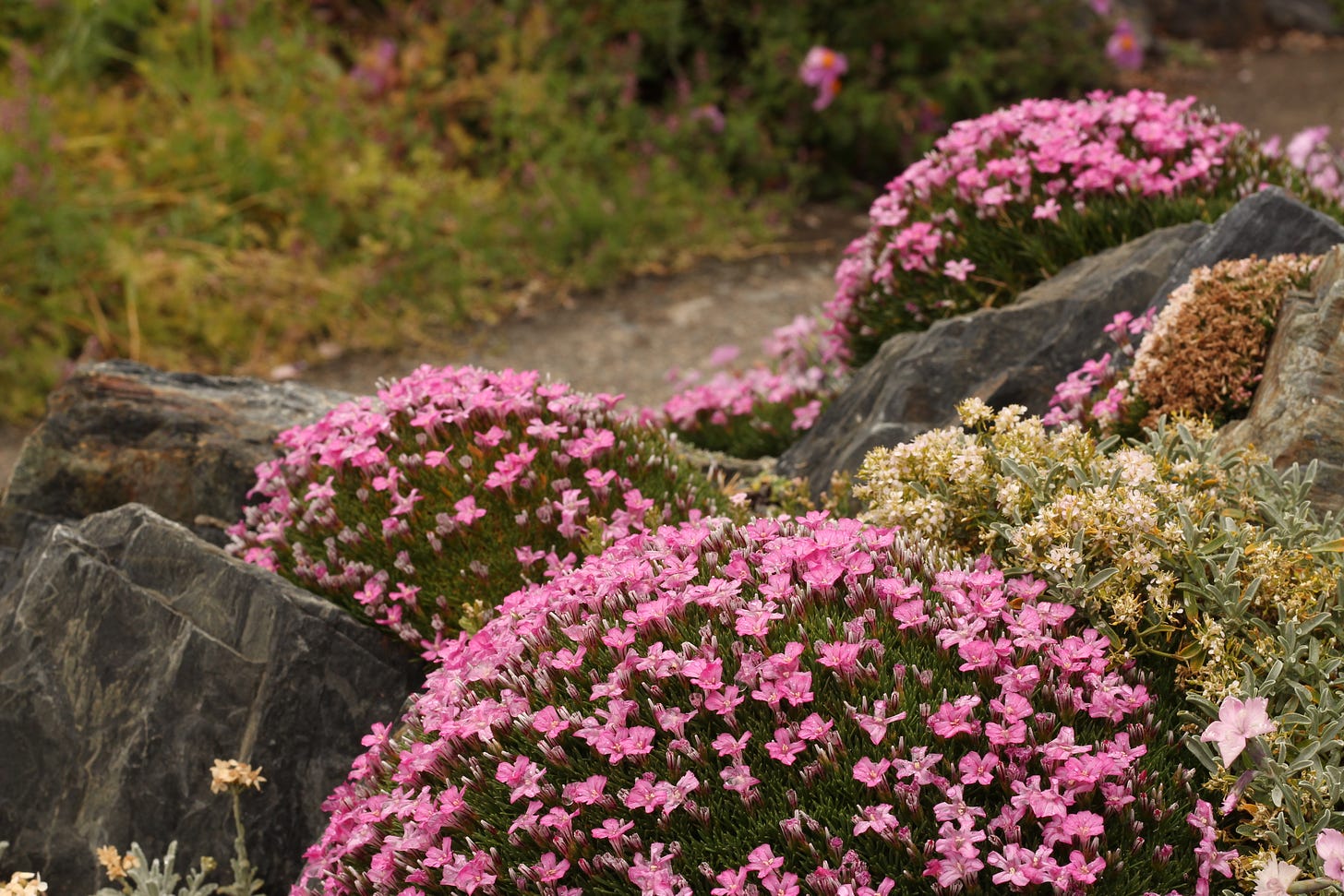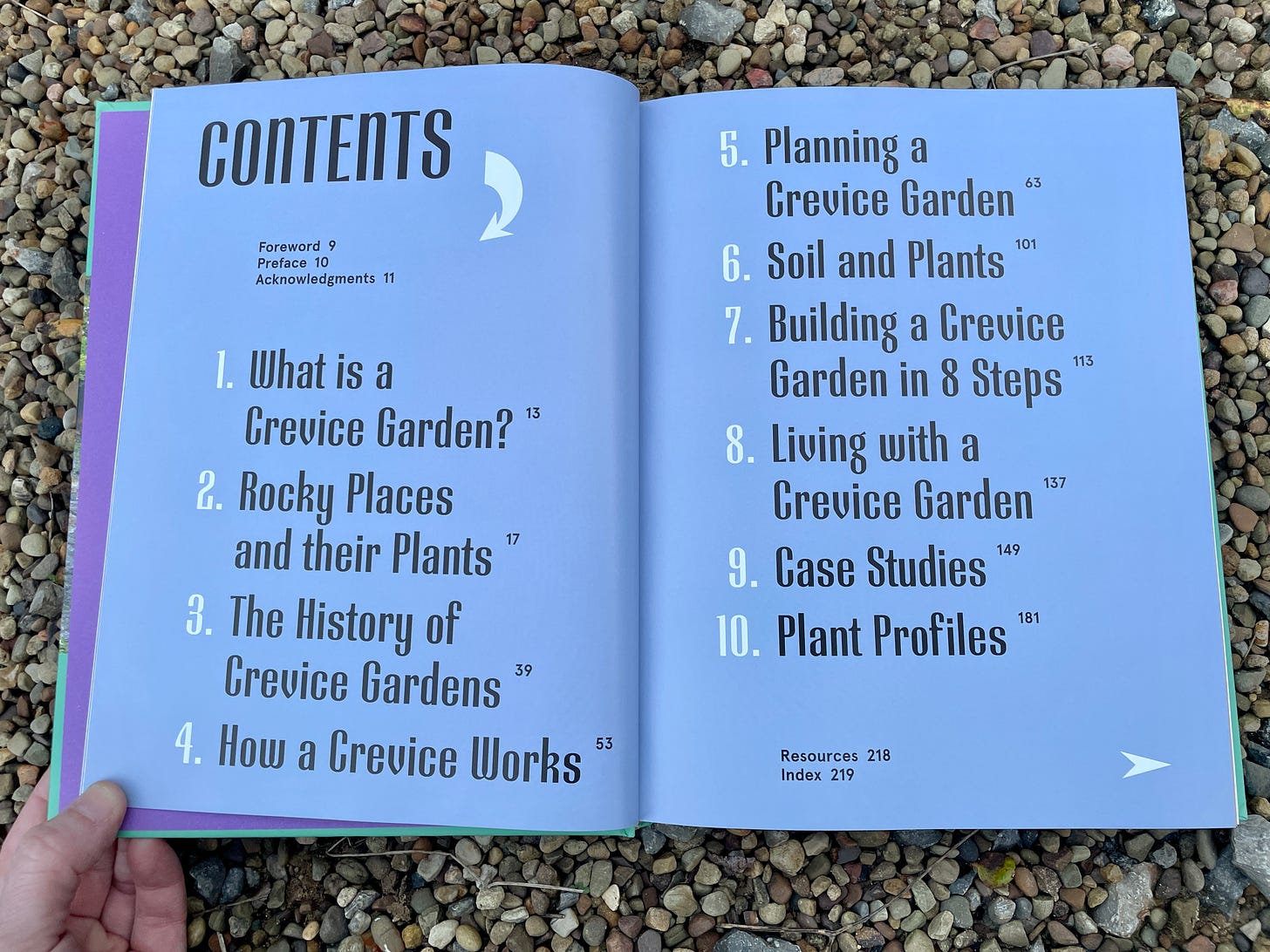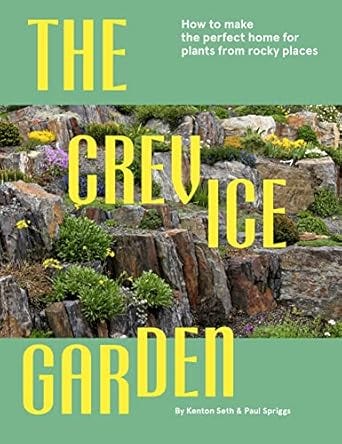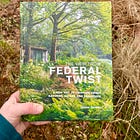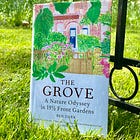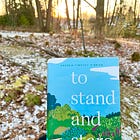The Crevice Garden: Author Interview with Paul Spriggs
...how crevices improve rock gardens & the plants that grow in them
“A garden entirely devoted to growing plants in crevices is a relatively new idea popularized by Czech rock gardeners in the mid-1980’s, but its roots are deep in the history of rock gardening and perpetual efforts to find a better way to grow alpine plants…”
🌿 Paul Spriggs & Kenton Seth, The Crevice Garden
This past spring a gardener friend invited me to a talk on crevice gardening at our local NARGS chapter by none-other-than Paul Spriggs! If you saw my 2023 Christmas book list then you will know that Paul is one of the authors of the new essential guide, The Crevice Garden: How to make the perfect home for plants from rocky places. Paul has a contagious love for the little plants of rocky outcrops, and it was a real joy to hear him share about the plants he loves and the history of crevice gardening (a unique subset of rock gardening). According to his book bio:
“Paul Spriggs has been rock gardening for 23 years and building crevice gardens for the last 16. He is a professional gardener and landscaper, and an avid plant explorer, photographer and mountaineer. He has a passion for all wild plants, especially miniatures, collecting and cultivating them in various gardens in his hometown of Victoria, British Columbia.”
Paul has very generously agreed to an interview about how he got into crevice gardening, and he has added some tips and plant lists for readers who may want to give it a try!
Welcome, Paul!
Julie: What is the difference between a traditional “rock garden” and a crevice garden?
Paul Spriggs: The Rock Garden has been evolving for more than 100 years, and during that time, many trends and methods have been developed in an attempt to better grow difficult, choice, and rare rock garden plants. I’d say that a traditional “Rock Garden” sometimes referred to as a “Rockery” is nothing more than a pile of sandy soil covered in rocks and gravel that are arranged in a way that looks like a natural, rocky scene you would find in nature. While the traditional rock garden can involve the use of deep, narrow crevices, that was often secondary to the aesthetic of the big picture. Most rock plants would grow just fine in this scene.
I say “most”, because some plants just seem to do better in a crevice that emulates their native habitats, which a traditional rock garden may not offer. So, what makes a crevice garden different is that it maximises the creation of crevices in the rock type and placement. This of course will use considerably more rock than a traditional rock garden, because so much more of the rock is buried at least 12 inches below ground-level, rather than just being a veneer of stone covering a medium.
“Mountains, deserts and coastlines are home to some of the most interesting plants in the world and a crevice garden provides the perfect environment for them. Closely packed rocks and free-draining soil media offer excellent conditions and diverse micro-habitats for these plants that range from discerning alpines to easy-going succulents…”
The Crevice Garden by Kenton Seth & Paul Spriggs
Julie: Where is your favorite crevice garden located? What is it like?
Paul Spriggs: For me, a really great crevice garden must meet 2 important criteria.
Firstly the rock placement must look natural. Even the smallest garden can have a jarring effect that lacks a certain flow if the basic rules of natural rock placement are not followed. So before a single plant is installed, there must be a sense of peace in the rockwork.
The second important aspect is the plant selection and design. Again, naturalistic plantings that mimic scenes in nature evoke a certain feeling of calm, rather than a mish-mash of random plants that don’t relate to one another.
My personal favourite crevice garden, which satisfies both of the above, is that of my mentor Zdenek Zvolanek located on the outskirts of Prague, Czech Republic. The garden, which he calls the “beauty slope” is over 40 years old and situated in a south-facing medieval stone quarry. Here in this relatively hot and dry microclimate, Zdenek has maximised his use of drought-tolerant plants from dry areas around the world such as The Mediterranean, Turkey, and the Western US. The garden is very large and has many hidden surprises as one journeys from the bottom of the slope, up the many rocky pathways that lead to a grand finale, a large, quarried bowl backed by a massive 50 ft. cliff.
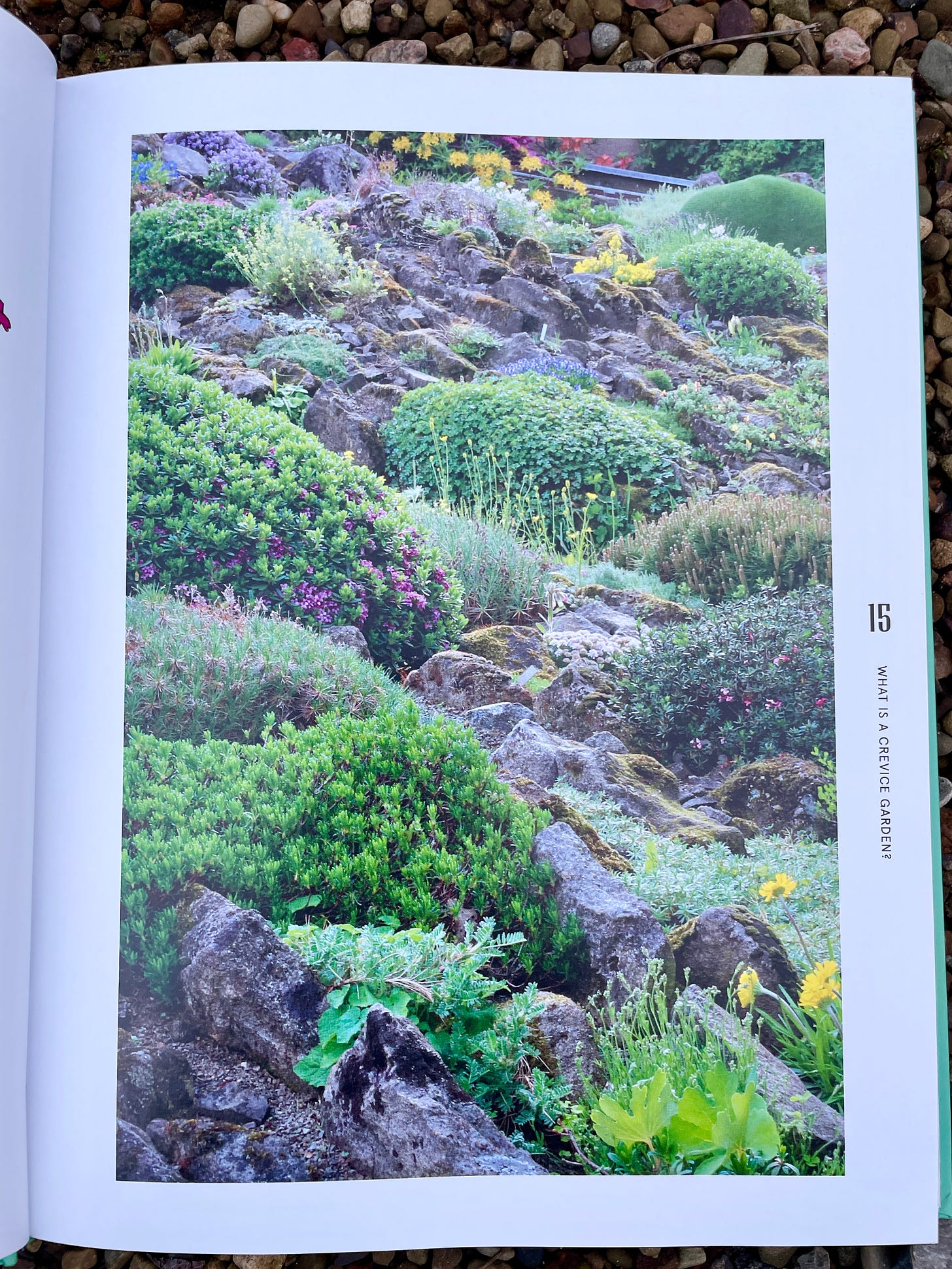
Julie: What inspired you to work with crevice gardens?
Paul Spriggs: My inspiration for crevice gardens started with the collision of two important worlds when I was in my early 20s. Those worlds were Mountaineering and Gardening. I’ve been gardening for a living since I was 19 years old. I’ve also been actively roaming my local western mountains (Cascades, Coast ranges, Olympics, Wenatchees, etc.) since I was 14.
I saw my first real rock garden here in Victoria when I was about 25 years old and I was instantly taken by how one could bring the mountain aesthetic down to your garden. I loved the tension between the beauty and softness of the mountain flora, and the drama and hardness of the mountain landscape. It was simply an irresistible combination that made me decide to make this kind of gardening my specialty. This was before anyone had even heard of the concept of Crevice gardens, so my first rock gardens were just normal rock gardens.
The next important event was the good fortune of having one of crevice gardening’s innovators take me under his wing as his apprentice, working on a number of local crevice gardens. His name is Zdenek Zvolanek; as fate would have it, he and his partner Joyce Carruthers (also an incredible rock gardener in her own right), settled for a number of years in Victoria, and were important members of our local rock gardening club, the Vancouver Island Rock and Alpine Garden Society (VIRAGS). After this I began traveling extensively to study these types of gardens in their homeland in the Czech Republic.
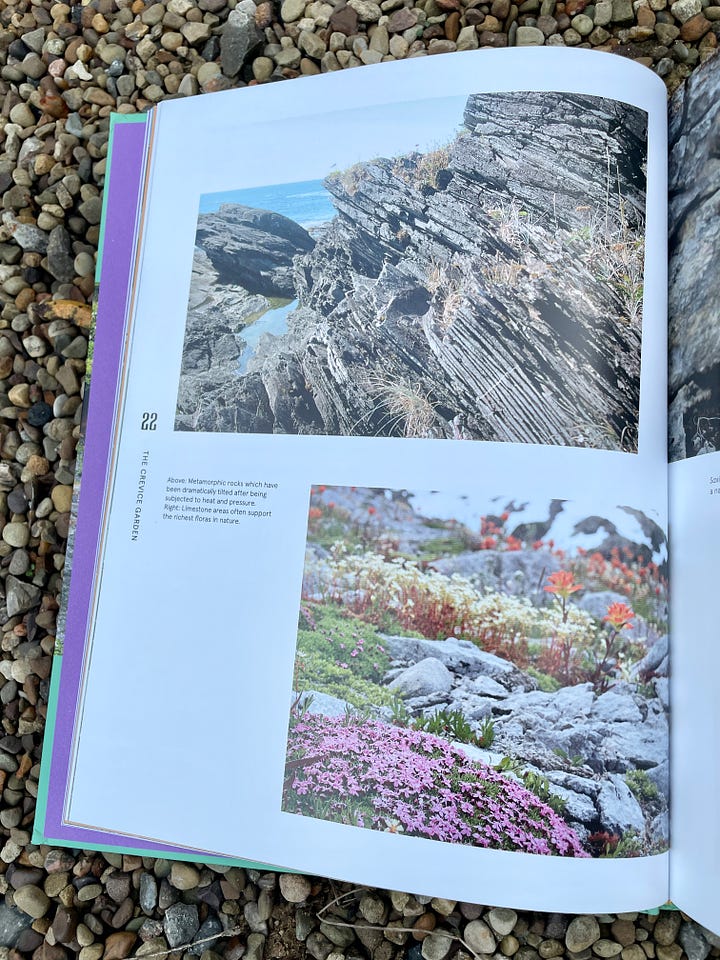
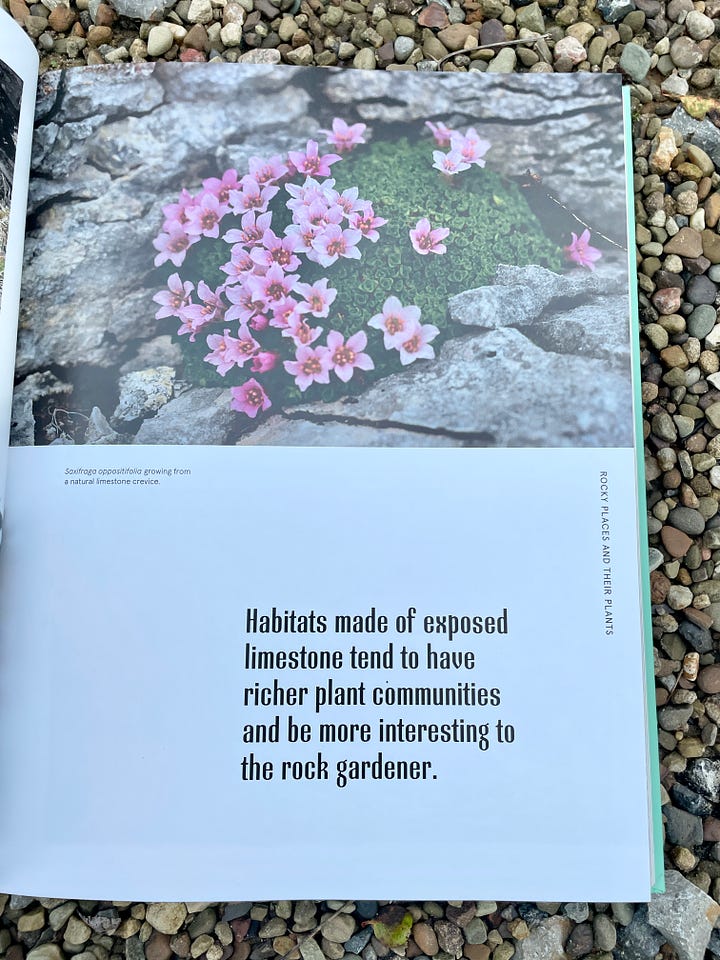
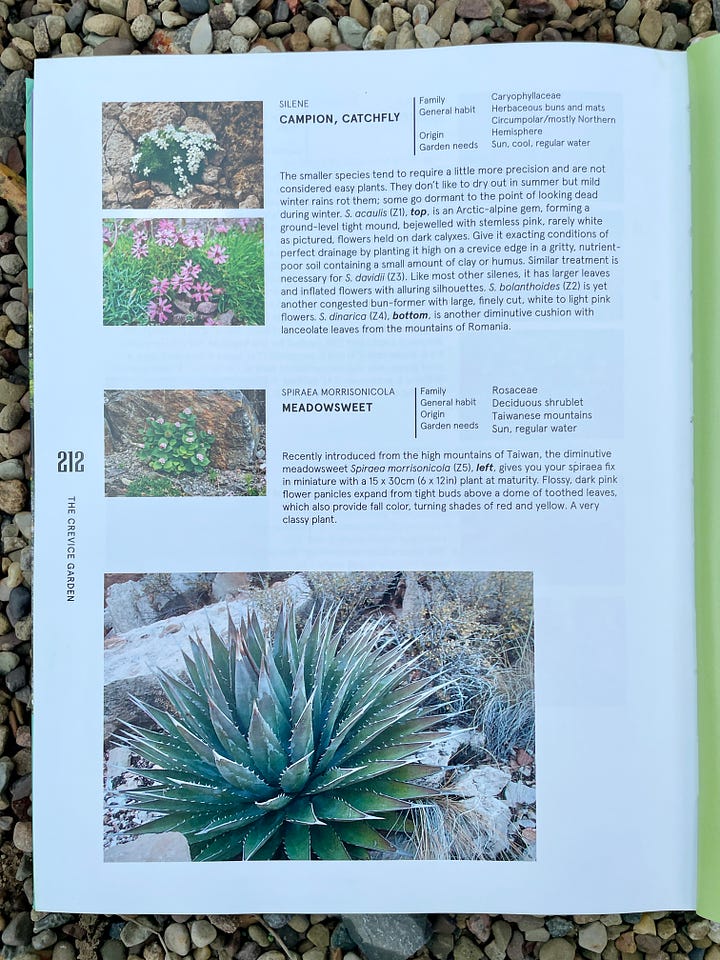
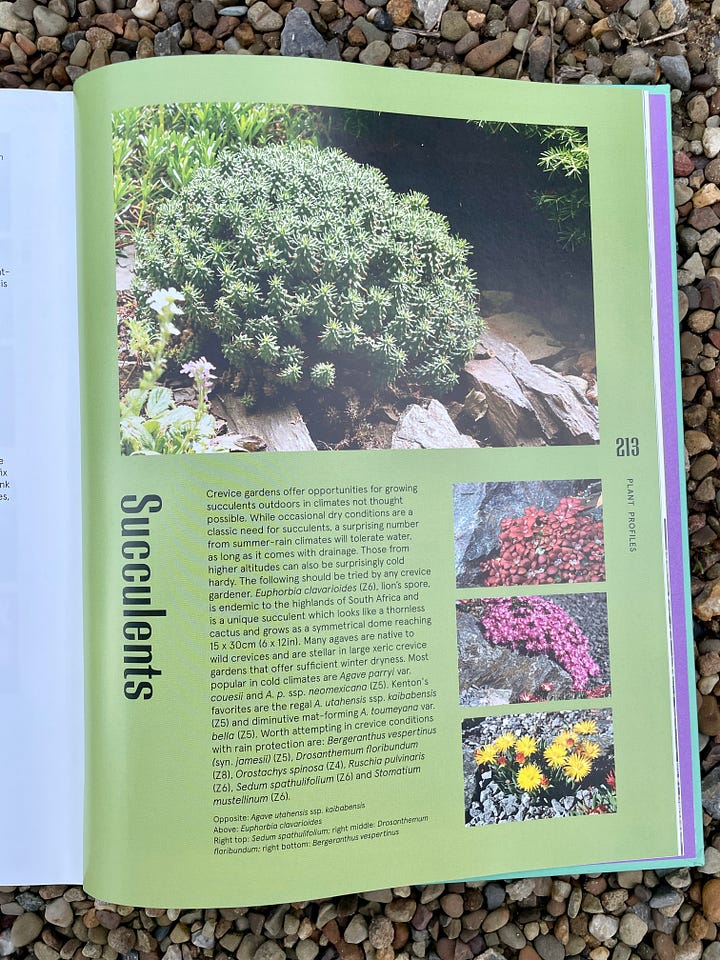
Julie: What are some important aspects to constructing a new crevice garden?
Paul Spriggs: Functionally speaking the crevice garden is relatively easy to build as long as you understand a few basic rules of how these plants like to live in their natural homes. The first important considerations are site, soil type, rock type, and plant selection. The site is crucial and must be an open, airy, bright location with good airflow and not too shady, although some high alpines do benefit from some mid-day shade with morning and evening light being sufficient. One point to remember is that places where these rocky plants grow often don’t have the soil depth or composition to support large, shade producing vegetation so the more open and sunny, the better.
The second important consideration is soil type. Again, rocky places don’t host rich soils because they don’t have decaying vegetation contributing to the buildup of rich, loamy soils. The general rule here is to stick to nutrient-poor yet mineral-rich soils that are more aligned with sands and gravels than with traditional garden loam. A good sandy loam will grow many rock plants, but always stick to the “sandy” side of things as these soils are poorer in nutrients like nitrogen, yet drain well, which is an important requirement for successful rock plant cultivation.
The rock type is more of an aesthetic consideration; try to avoid mixing rock types, because we are again copying natural outcroppings, which generally are composed of only one type of stone. Most rock plants don’t care what type of stone they’re growing next to, although as always, there are exceptions.
Finally, plant selection and planting. The plants bring life and soften the otherwise harsh and rocky scene. I like to fill the garden as quickly as possible. Many of the plants we like are not quick growers, so if you don’t fill it up, you run the risk of the garden looking like a rock pile for longer than it should.
Julie: Do you have a favorite genus of plants for beginners just starting out their journey into crevice gardening?
Paul Spriggs: Yes, the genus Dianthus. Dianthus (above) are tried and true alpine plants that are perfect for the beginner as they grow very readily from seed and cuttings, come in a wide array of species to keep even a seasoned rock gardener’s interest, and are tolerant of a wide variety of garden conditions. Some of my favourite species are D. webbianus, D arpadianus, and D. haematocalyx. All form tight buns of condensed rosettes that look just as good when not in flower.
Julie: Which plants are rarely seen in US crevice gardens, but should be grown more often?
Paul Spriggs: Some of the first plants that come to mind are plants from the dry western areas of the US. Particularly the genus Eriogonum, or Alpine Buckwheat. These are deep rooted, drought tolerant, and often ground hugging plants that are well deserving of space in any rock garden. My personal favourite E. ovalifolium var. nivale.
Another group of plants seen commonly in European rock gardens are the Dwarf Daphnes. a few of the group such as D. petraea, D olioides, D. hendersonii and D. arbuscula are a few species (and their hybrids) to look out for.
Julie: What are three good crevice garden plants to try in colder, wetter climates in the northern continental US?
Paul Spriggs: There are many rock plants that will survive cool winters and wet summers such as those experienced in the northern continental US. So many traditional rock plants come from regions of Europe that have almost identical climates.
One such plant is Globularia cordifolia of the aster family. It is an easily grown mat-forming evergreen which boasts small blue pom poms.
Another plant which fits the bill is the conversation starter Arenaria ‘Wallowa Mountains”. This plant will creep among the stones on the rock garden forming the tightest carpet of congested, upward-pointing leaves. Although shy to show its simple white flowers, they are really a secondary feature after the form of this one.
Lastly, the Saponarias, or soapworts offer many possibilities, but one show-stopper is the easily grown hybrid S.’ Bressingham Pride.’
Julie: What about three good crevice plants for hotter, xeric environments in the US?
Paul Spriggs: The above-mentioned Eriogonum take the cake for xeric gardens, but another indispensable genus is Acantholimon, otherwise known as “Prickly Thrifts” due to their resemblance to some species of Armeria (Thrift). These plants range from the mediterranean to the middle east, with some favourites being A. Trojanum, A. venustum, and A. saxifragiforme.
Cacti and succulents can play an important role in the xeric crevice garden. My favourite Cactus is Escobaria sneedii var. leii, with it’s tiny rosettes resembling a small sempervivum.
Honorable mention goes to my co-authour Kenton Seth’s pet genus Aloinopsis, from the high mountains of South Africa, also known as hardy “Living Stones.”
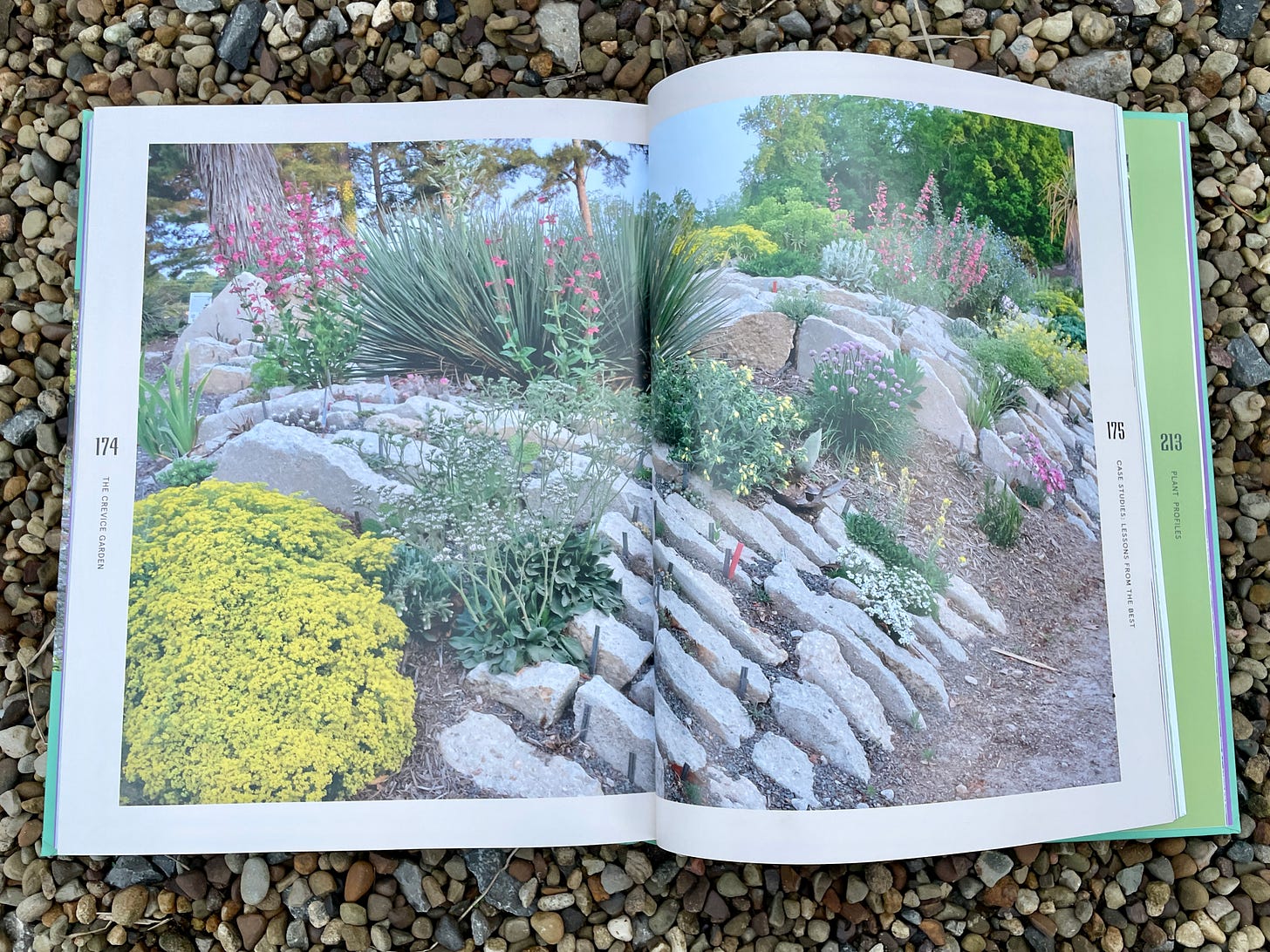
Julie: What does maintenance for a crevice garden include?
Paul Spriggs: Maintaining a crevice garden is minimal. All the hard work is up front. Site prep, soil and stone installation can be back-breaking work, but once that’s done, the rest is easy by comparison.
There is often a flush of weeds the first year, but once controlled, the conditions of a rocky, harsh environment preclude the growth of competitive weeds. Bare soil is top dressed with gravel to further suppress germination and easy pulling of seedlings.
As the garden matures, judicious pruning of the woodies will be necessary to keep the garden open. Consistent editing may be necessary as plants crowd each other, get old and outlive their space, or just outright die.
A yearly topdressing of gravel that matches the color of the stone in the garden will keep things looking fresh and continue to give the plants the rocky-ground conditions they need to thrive.
Julie: If I travel to see a crevice garden in the US or Canada, where should I go?
Paul Spriggs: In the US, there are 4 installations that Kenton and I have worked on together over the past decade: Apex Crevice Garden, in Arvada, CO; Cistus Nursery, Portland, OR; Far Reaches Botanical Conservancy, Port Townsend, WA; and Cheyenne Botanical Garden in Cheyenne, WY.
Other great places to see crevice gardens are The Denver Botanical Garden in Denver CO and Juniper Level Botanical Garden in Raleigh NC.
In Canada, there is a large crevice garden at the Montreal Botanic Garden.
Those are some big ones, and there are many more. They just seem to be popping up anywhere there are rock gardener communities with active rock gardening clubs, municipal and public parks and any botanical gardens that feature rock gardens or troughs.
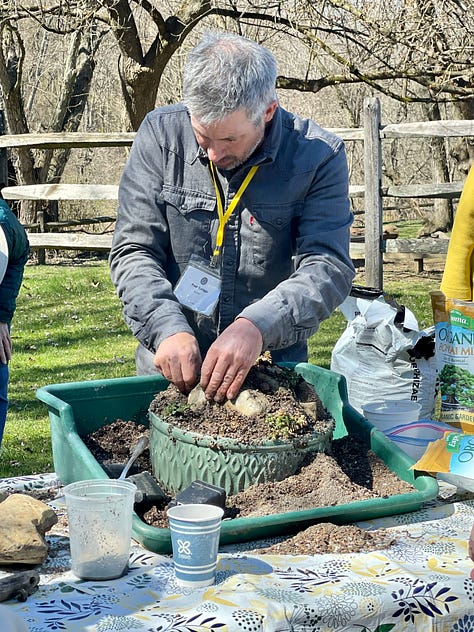
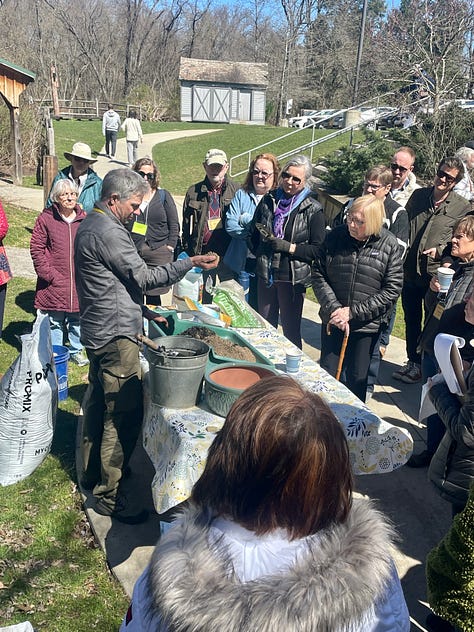
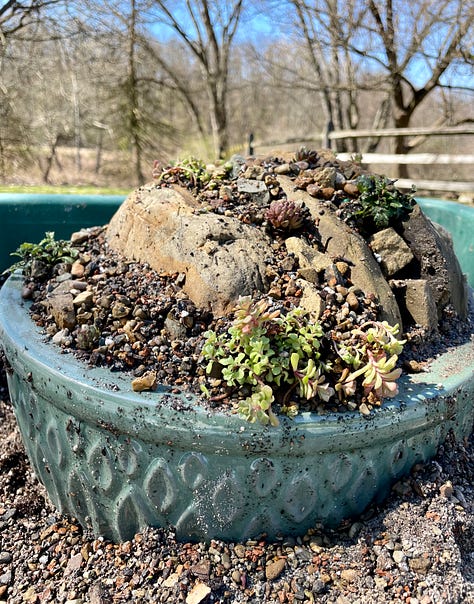
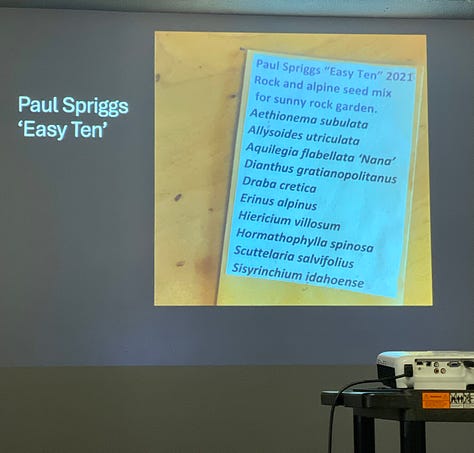
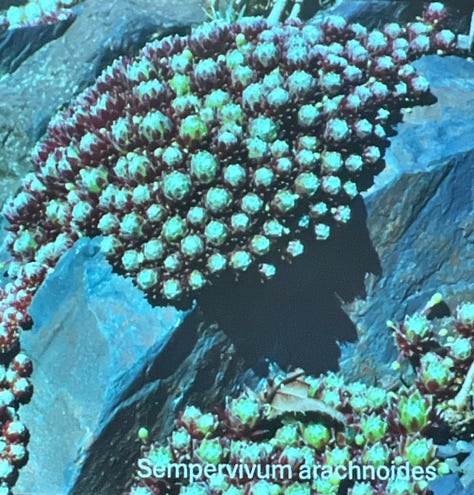
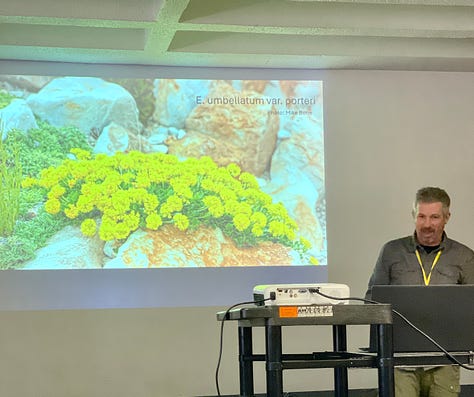
Julie: Where can we find out more about your work?
Paul Spriggs: Much of my work in rock gardening recently has been through lecturing on a broad range of topics related to rock gardening, both in person and through Zoom lectures. I’ve also done a million demos and workshops. Some of these have been put up on YouTube, along with a few other odds and ends that have ended up there. (See a list below!) I have an Instagram page devoted to my rock gardening, Paul Spriggs Rock Gardener.
Kenton Seth and I have a Facebook page devoted to Crevice Gardens called Modern Crevice Gardens. Our book, The Crevice Garden: How to make the perfect home for plants from rocky places, is also a good starting point for anyone venturing down this adventurous horticultural path.
Julie: Thank you, Paul! Your book is indeed a fabulous place to start. So glad to share it here today!
Here is a beautiful four-minute intro to Paul’s enthusiasm for crevice gardens from Visionary Gardeners:
Classes by Paul Spriggs for various organizations:
Have you read The Crevice Garden? Love to hear!
Other Author Interviews:
*Amazon Affiliate links are included in this newsletter. I make a few cents per recommendation, each of which I hope will be helpful to you! Note: I also include many links which are not affiliates to other sites for research purposes.




